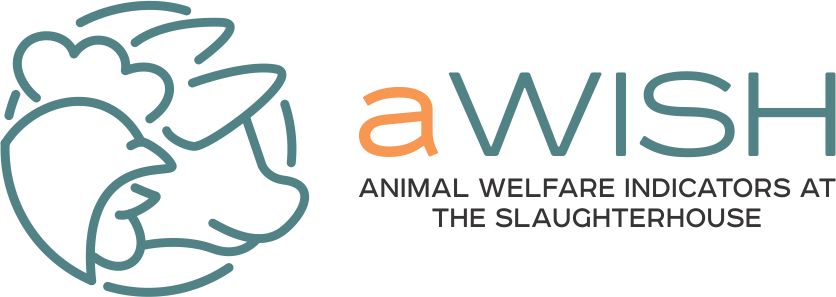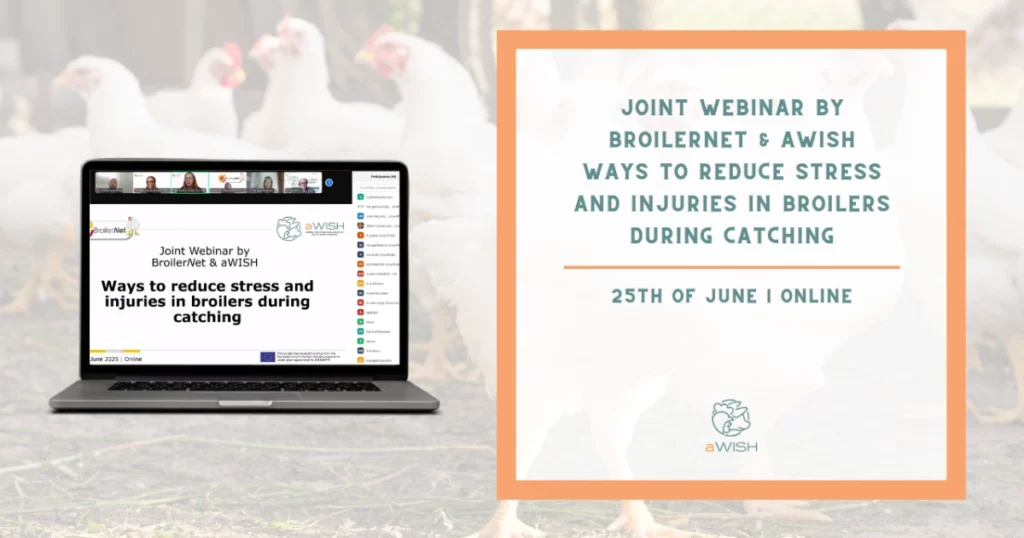The event brought together researchers, industry stakeholders, and field experts to share knowledge on improving broiler welfare during one of the most sensitive phases of production: catching and transport.
Rethinking Broiler Catching: Welfare, Ergonomics, and Economics
The seminar opened with a presentation of a comparative study analyzing three broiler catching techniques: inverted catching, upright catching, and mechanical catching.
These methods were assessed across several parameters, including animal injuries, vocalizations, mortality rates, worker ergonomics, and overall cost-efficiency.
Among the findings, upright catching emerged as the most welfare-friendly approach, resulting in fewer lesions and lower rates of birds arriving dead at the slaughterhouse. It also proved to be more ergonomic for workers, reducing strain and the risk of injury during handling. However, this method often comes with higher associated costs, which may impact its scalability for certain operations.
Inverted catching, while more economical in some contexts, showed a higher incidence of injuries and stress indicators in broilers. Mechanical catching, on the other hand, offered a promising compromise—reducing physical labor demands and standardizing handling procedures. Its success, however, depends heavily on farm infrastructure, particularly the need for wide, obstacle-free corridors that allow smooth equipment operation.
The Role of Mechanical Harvesting
Manual catching continues to be the standard in broiler production, but its limitations are becoming increasingly clear. Labor shortages, inconsistent handling, and welfare concerns are prompting a shift toward automation. During the seminar, an Italian-developed mechanical harvester was presented, showcasing its potential to transform this stage of the supply chain.
This system, which can be attached to a tractor, significantly reduces the need for manual handling. When used in facilities designed to accommodate such equipment, it improves consistency and reduces the risks associated with traditional catching methods. However, successful adoption requires investment in infrastructure adaptation to ensure smooth operation and optimal outcomes for both birds and
workers.
A Comprehensive Approach to Reducing Stress and Injuries
Improving animal welfare during the catching and transport process is not only an ethical responsibility but also a direct implication for meat quality and economic performance. Stress and trauma can occur at multiple points, from pre-catch fasting to slaughterhouse handling. The seminar emphasized the need for a holistic approach.
Effective fasting protocols help prepare animals for transportation. Gentle handling by trained teams during catching, combined with calm and efficient loading operations, may reduce fear and injuries. Transport conditions—such as climate control and vehicle design—must prioritize bird comfort to minimize mortality. Finally, proper handling at the slaughterhouse ensures that welfare gains achieved earlier are not lost
at the final stage.
Poor welfare management can result in economic losses from damaged carcasses, higher mortality, and reduced meat quality. Investing in welfare, therefore, is not just the right thing to do, it’s a smart business strategy.
The aWISH project remains committed to advancing science-based practices that enhance animal welfare across the livestock sector. We thank BroilerNet for the invitation, and all speakers and participants for contributing to this important exchange of knowledge.


